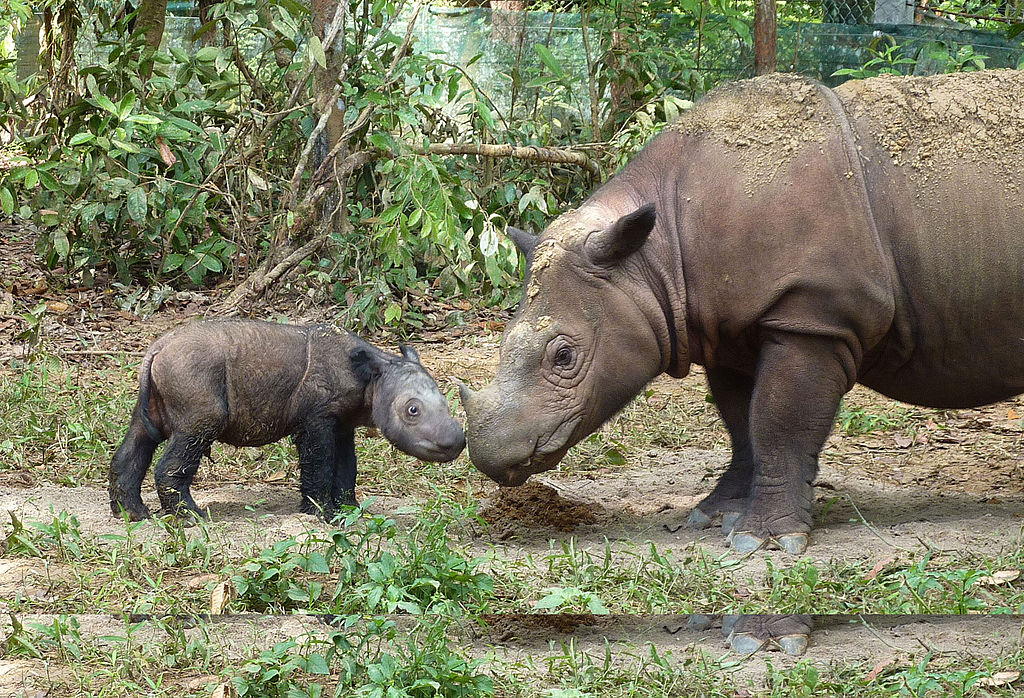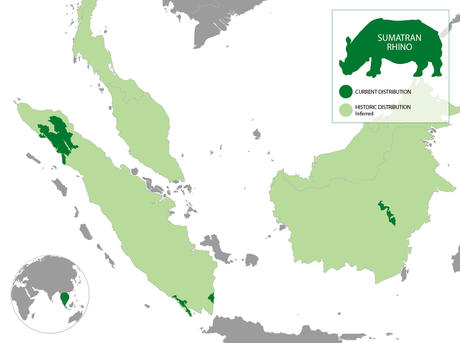 The recent news of the death of the last male Sumatran Rhino in Malaysia brings with it great sorrow - it is not only the end of an animal but an alarm bell that the species is at risk of extinction.
The recent news of the death of the last male Sumatran Rhino in Malaysia brings with it great sorrow - it is not only the end of an animal but an alarm bell that the species is at risk of extinction.
According to Malaysian officials, the thirty-year-old Sumatran Rhino named Tam died on Monday at a reserve in the city of Sabah.
The cause of the death was presumed to be old age, but it was also reported that Tam suffered from kidney and liver problems prior to his demise.
Tam’s death leaves behind a female rhino by the name of Iman in Malaysia. The Sumatran Rhino species was declared extinct in the wild in Malaysia by scientists in 2015. Researchers had been trying to use in-vitro fertilization to breed Tam in hopes that the Sumatran Rhino population would continue.
The Sumatran Rhino
 The Sumatran Rhino is the smallest species of rhinoceroses and is the closest related descendant of the long-extinct wooly rhino that lived 10,000 years ago. These hairy animals prefer to live in solitude and mark their territory with saplings, urine, and feces.
The Sumatran Rhino is the smallest species of rhinoceroses and is the closest related descendant of the long-extinct wooly rhino that lived 10,000 years ago. These hairy animals prefer to live in solitude and mark their territory with saplings, urine, and feces.
Sumatran Rhinos are found mostly in the Indonesian island of Sumatra and in Malaysia (until now). Fewer than eighty are left in the wild in Sumatra. With their habitats broken up due to deforestation, the small remaining groups have to breed among themselves and this leads to fewer offspring.
Also, the lack of males to mate with makes the females infertile as they develop complications in their reproductive system.
The Sumatran Rhino is also the only Asian species of rhino with two horns, which, unfortunately, has become its curse. Their existence is threatened by poachers who value them for their horns which are used in Chinese medicine (though there is no proof it works) and for decorative purposes (such as handles in ornamental daggers).
The Effect of the Loss
It is typical for species to go extinct from natural causes such as volcanic eruptions or meteorite impact, and for evolution to create new species.
 However, the high rate of extinction we are seeing today is caused by humans and is a result of habitat destruction, poaching, and global warming.
However, the high rate of extinction we are seeing today is caused by humans and is a result of habitat destruction, poaching, and global warming.
This will undoubtedly affect us, for we depend on insects for pollination and the forests for trapping atmospheric carbon. When a species goes extinct, it disrupts nature's food web and endangers many other species in its ecosystem.
Prior to Tam’s death, the World Wildlife Fund had stated that the population of Sumatran Rhinos was stable, but that only two captive females could reproduce in the last 15 years.
One of the rhinos died in 2017, and the other one, Iman, is now incapable of reproducing. This leaves scientists with very few choices -- hope the very few wild rhinos are able to reproduce, capture a male and female and breed them in captivity (chances of success are very low), or use stored rhino egg and sperm for artificial insemination (IVF).
The state of the Sumatran Rhino is a grim reminder of how acting late lowers the chances of survival of a species. It is also a lesson that we need to act soon to preserve other species that are at risk.
Sources: BBC, AlJazeera, WWF, theconversation, National Geographic








